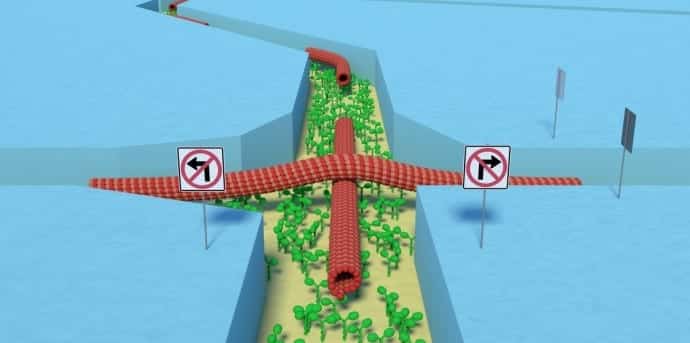Scientists have developed world’s first living and breathing supercomputer
Scientists in the near future may be able to create living and breathing supercomputers that depend on Adenosine triphosphate (ATP) to function. ATP, which is the substance that provides energy to all the cells in our bodies, may also be able to power the future generation of supercomputers.
That is what an international team of researchers believe that is led by McGill University’s Dan Nicolau, Chair of the Department of Bioengineering. They have published an article on the subject this week in the Proceedings of the National Academy of Sciences (PNAS).
In a recently conducted study, scientists described a model of a biological supercomputer that has been created and can process information very quickly and accurately using parallel networks in the same way that massive electronic supercomputers do.
Except that the model bio supercomputer they have created is a whole lot smaller than current supercomputers, uses much less energy, and uses proteins present in all living cells to function.
“We’ve managed to create a very complex network in a very small area,” says Dan Nicolau, Sr. with a laugh. He began working on the idea with his son, Dan Jr., more than a decade ago and was then joined by colleagues from Germany, Sweden and The Netherlands, some 7 years ago. “This started as a back of an envelope idea, after too much rum I think, with drawings of what looked like small worms exploring mazes.”
The model of this supercomputer was created by combining geometrical modelling and engineering know-how on the nano scale.
The circuit that has been created seems to be like a road map of a well-planned city as seen from a planet. It has a chip measuring about 1.5 cm square in which channels have been etched. A short string of proteins moves around the circuit in a controlled way instead of electrons pushed within a traditional microchip.
Researchers suspect that many others will come up and try to push it further, as now it is a way of successful dealing with a single problem. They are planning ways to combine this device with a conventional computer to form a hybrid device and working on varied ways to push the research further.
Even though the model bio supercomputer was able to very proficiently tackle a complex classical mathematical problem by using parallel computing of the kind used by supercomputers, the researchers understand that there is still a lot of work ahead to move from the model they have created to a full-scale functional computer.
“Now that this model exists as a way of successfully dealing with a single problem, there are going to be many others who will follow up and try to push it further, using different biological agents, for example,” Nicolau Sr. said.
“It’s hard to say how soon it will be before we see a full scale bio super-computer. One option for dealing with larger and more complex problems may be to combine our device with a conventional computer to form a hybrid device. Right now we’re working on a variety of ways to push the research further.”

